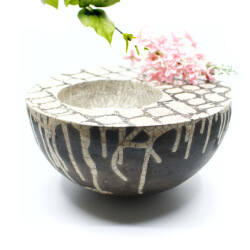
large Raku chessboard bowl in black and white
139,00 Euro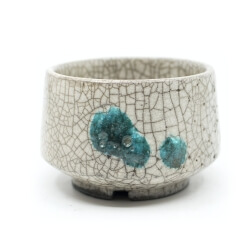
Handmade Blue Raku Tea Bowl 'Water Bubble'
62,00 Euro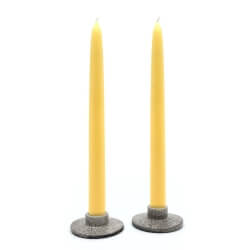
Minimalist Handmade Raku Candlesticks
Sold out39,00 Euro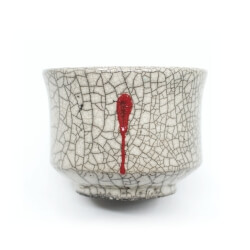
White Raku Tea Bowl 'Heart's Blood' with Red Drops
Sold out62,00 Euro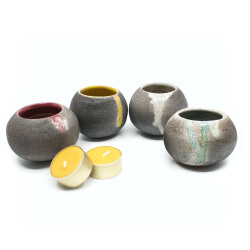
Happy colourful raku tea lights - spherical set
69,00 Euro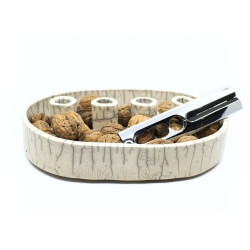
Oval Raku Candle Holder in White - Advent Wreath
-28%99,00 Euro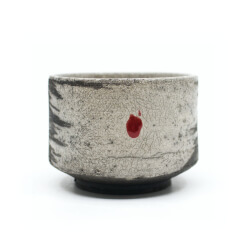
Handmade Raku Tea Bowl 'Crane Luck'
72,00 Euro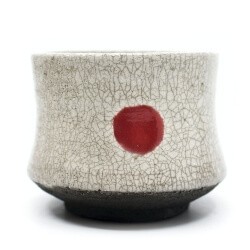
Handmade white Raku Tea Bowl 'Red Sun'
Sold out42,00 Euro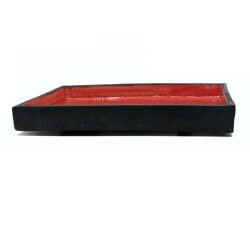
Square red Ikebana vase from the Raku firing
79,00 Euro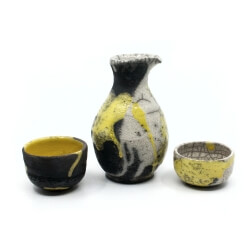
handmade Raku Sake Set in white & yellow
Sold out59,00 Euro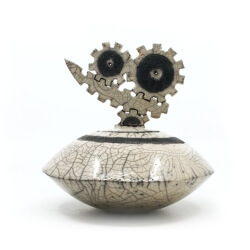
Handmade Raku can with gear wheels - gear wheel head
59,00 Euro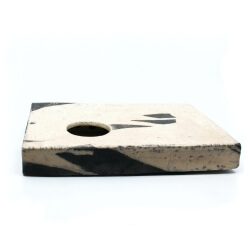
Square white Ikebana vase from the Raku fire
Sold out79,00 Euro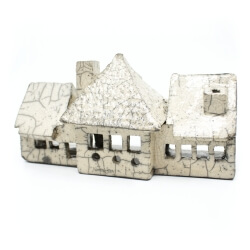
Handmade White Raku Tealight House / Lantern
Sold out79,00 Euro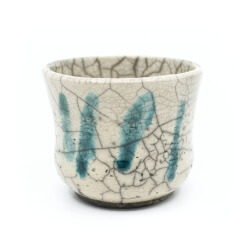
Handmade White Raku Tea Bowl 'Blue Fingers'
32,00 EuroRaku ceramics - a welcome greeting from the past
The original Raku technique was developed in Japan in the 16th century. It was invented by the tea ceremony master Sen-no Rikyu and refined throughout his life. He managed to unite the spirit of Zen Buddhism and the tea ceremony interwoven with it. Classical Raku emphasizes clear forms and structures, the simplicity reduces the objects to the essentials.
Since Soldner and Leach brought the technique to the West of the world in the 1940s, modern influences have been and still are present in Raku. Modern Raku extends the aesthetics of Japanese models. It accepts an extended language of forms by cutting and deforming the objects previously produced on the turntable as well as negative painting with wax or latex. They always have one thing in common: chance; and he is the best artist of all.
None of the pieces resembles another and every firing is different. This is precisely the joy that the word Raku means. Raku doesn't suit everyone, it is unique and sometimes difficult. But it is like everything in life: it's worth it. The tea bowl (jap. Chawan) changes over time and matures.
It is as if Raku reflects life or is its companion.

Raku firing technique
The Raku technique is different from other techniques, which is what makes it so special. The previously bisqued and glazed ceramics are taken out of the kiln with a yellow glow using toothed tongs and placed in a container with sawdust or other easily combustible organic material. The tea bowls or other objects have a temperature of about 1000°C - they glow like lava, because they are as hot as lava! The hot ceramics ignite the shavings immediately and cause everything to soot and smoke. The drop in temperature leads to the cracks (craquelé) in the glaze typical of Raku. This is exactly the reason why Raku is so unique. Raku is a challenging technique. It depends on mature craftsmanship in the production. All glaze-free surfaces and the resulting crackles are blackened by the smouldering firing that now takes place.
Finally, after cooling down, the ceramics must be scrubbed extensively with a rough sponge, as the burnt organic materials literally dig into the glaze.
Due to its history, Raku ceramics are not waterproof after firing. The relatively low temperatures are not sufficient to crystallize the minerals contained in the clay. But Raku would not be happy if there were no pragmatic solution to this problem. It is time. Raku has its origin in Zen Buddhism, Raku is born out of deceleration. The industrialized world is hectic enough. Enjoying a tea from a handmade Raku Chawan is like the world having a break. This is why the Chawan, vase or plate sinters over time due to the suspended particles contained in the tea or water and after a while of use is absolutely waterproof.
As with everything in life - good things take time. Then as now.